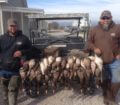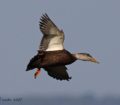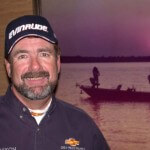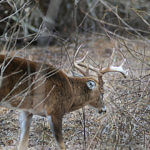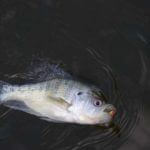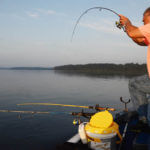Editor’s Note: One of the toughest places in America to hunt waterfowl is Louisiana, due to the temperatures. The first time I hunted there, my guide brought out two cans of industrial strength Yard Guard to keep the mosquitoes out of our blind. Bill Daniels of Hayes, Louisiana, has been hunting the Bayou State for 35+ years. This week he’ll tell us how to hunt ducks at the end of the flyway.
 During the last few weeks of duck season, we change up our tactics. By then, we’re often hunting yoyo ducks – ducks that have migrated from the north to southern Louisiana. Once a warm front comes through, they migrate back toward northwest Louisiana. These ducks have seen northern blind set-ups and decoys, and they’ve heard southern callers and seen their set-ups and decoys. Ducks at the end-of-the-season are the most highly-educated ducks that we hunt all year long.
During the last few weeks of duck season, we change up our tactics. By then, we’re often hunting yoyo ducks – ducks that have migrated from the north to southern Louisiana. Once a warm front comes through, they migrate back toward northwest Louisiana. These ducks have seen northern blind set-ups and decoys, and they’ve heard southern callers and seen their set-ups and decoys. Ducks at the end-of-the-season are the most highly-educated ducks that we hunt all year long.
Instead of setting-up our big spreads of decoys and leaving them, we take-up our decoys. Every morning when we go out to hunt, we’ll only put out a few decoys and arrange them differently from the way we’ve had them arranged the previous day. Our specklebelly geese also have pretty much nailed down where our blinds are, and they’ve become extremely blind-shy. So, instead of trying to call the speckled bellies to the blind, we scout and find where the specklebellies are landing in the fields. Then, we go to where the specklebellies want to land and hunt out of layout blinds. We more or less follow the specklebellies around the farms. Every time we see that the specklebellies have moved from one field to another field, we move with them. We do the same thing with ducks. If the ducks quit working our blind, we go out into flooded fields and set-up a blind where the ducks have been feeding the day before and hunt that spot for a few days.
Unless we get a really big cold front that comes in before Christmas, duck hunting at the end-of- the season is tough and requires much more scouting than calling and putting out decoys. That’s not to say we don’t call or put out decoys, because we do, but our decoy spreads are much smaller, and we may not hunt from the same blind more than one or two mornings before we move. Toward the end of duck season, I may not be putting out more than one to two dozen decoys. Most of the decoys we use are Greenhead Gear (https://www.greenheadgear.com/). We put out mallard, pintail, gadwall and quite a few green-wing teal decoys. If our section of Louisiana has had a warm winter, we’ll see a lot of blue-wing teal migrating – headed back north. We change up our calling at the end-of-the-season. We’ve found if we call loudly and obnoxiously, the ducks will skirt away from the blind. Also, we’ve learned that less calling is more at the end of the season.
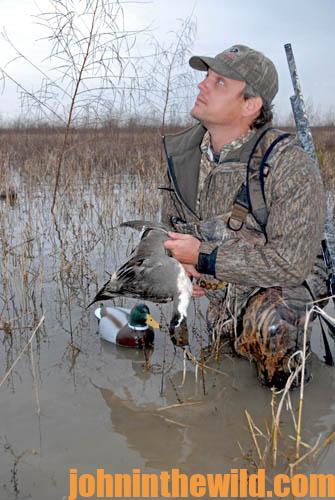 I’m often asked, “When do you call the shot?” When we’re hunting geese, I like to call the shot when the geese are right straight-up in front of the blind. If I call the shot when the geese are almost on top of the blind, I’ve found that the geese still will be in range for a second shot before they can get out of range. With ducks, I like to call the shot when the ducks have their wings cupped right in front of the blind. However, if I see that those ducks may not come in as closely as I want them to, I’ll call the shot a little farther away from the blind. I usually like to have the ducks at less than 40 yards when I call the shot.
I’m often asked, “When do you call the shot?” When we’re hunting geese, I like to call the shot when the geese are right straight-up in front of the blind. If I call the shot when the geese are almost on top of the blind, I’ve found that the geese still will be in range for a second shot before they can get out of range. With ducks, I like to call the shot when the ducks have their wings cupped right in front of the blind. However, if I see that those ducks may not come in as closely as I want them to, I’ll call the shot a little farther away from the blind. I usually like to have the ducks at less than 40 yards when I call the shot.
Every year, I’ll have several hunters who just can’t stand to wait to shoot. Sometimes hunters will pop up out of the blind before I’ve called the shot. Every morning, I give my hunters a safety speech and emphasize that I’ll call the shot and don’t want them to come up until they hear me say, “Take them.” One morning I was calling to a goose about 80 yards from the blind. All of a sudden, on the other end of the blind, I heard a shot. Instantly, when I heard that shot I thought, “Somebody’s head is going to be on the floor.” I thought the gun had gone off accidentally. I yelled, “Who did that?” A guy at the end of the blind said, “I wasn’t supposed to shoot?” I replied, “No. Do not do that again. Please, don’t shoot until I tell y’all to shoot.” I said that in a voice as nice as I could speak. I was holding back the anger I felt at this guy for messing up.
Ten minutes later, I was calling to a flight of ducks, and this guy jumped up again and shot before I called the shot. I’ll be honest, the second time around I wasn’t very polite with him. I lit into him pretty hard. When I’m not expecting a gun to go off, and a gun fires, it scares me to death. Immediately, I think the worst. I think somebody has dropped a gun, or somebody has been shot accidentally. When I hear that shot fired, I know I’m not in control of my hunters. To be safe in a blind and to maximize the number of ducks and geese we take, the guide has to be the captain of the ship. He has to be the only one calling the shot. When the hunt was over, we all laughed about it – well, some of the hunters didn’t laugh – but I think that hunter got the message.
 To learn more about all types of hunting, you can see John E. Phillips’ books, available in Kindle, print and Audible at https://johninthewild.com/books.
To learn more about all types of hunting, you can see John E. Phillips’ books, available in Kindle, print and Audible at https://johninthewild.com/books.

